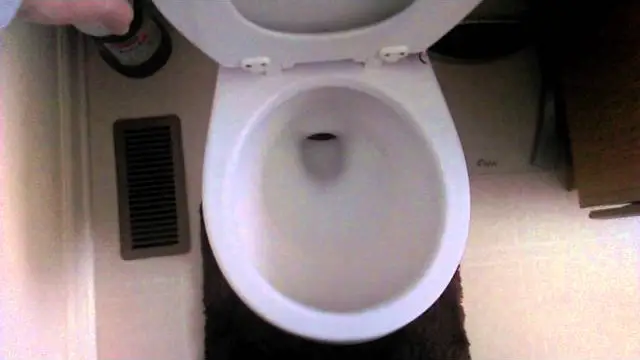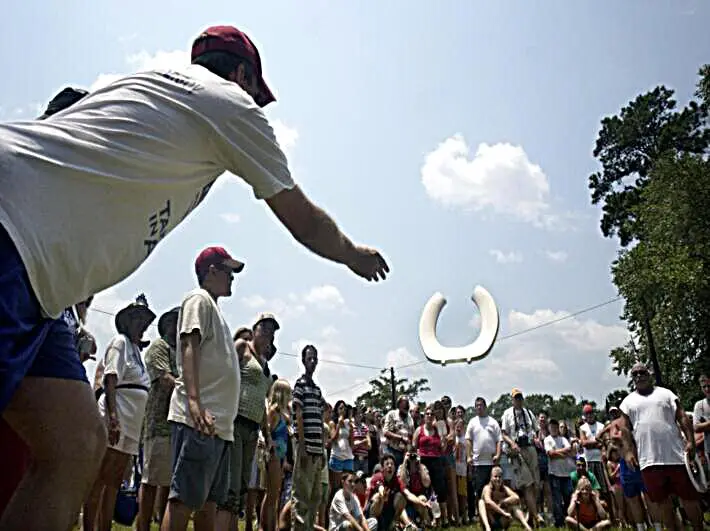
Should the toilet seat be up or down? – It should always be down along with the lid. Not only is it common courtesy, it also traps germs in while flushing.
Should toilet seat lid be up or down?
gender –
But those lids are actually an important part of reducing the spread of bacteria and were designed to help keep your bathroom cleaner. Every time you flush a toilet, germs can spread through the bathroom through micro-particles escaping into the air. This is not good news for your otherwise clean and shiny bathroom.
- You want the bathroom to be an environment of relaxation and respite so, cleanliness really counts.
- Calming showers and luxurious baths are high points in our day but thoughts of germs can be somewhat deflating.
- Luckily there is an easy fix for this issue; simply close the lid,every time! The lid was designed to keep germs where they belong, in the bowl and down the drain! If you leave the lid up when you flush, those germs can float around your bathroom, landing on any available surface, including towels, hairbrushes or even toothbrushes.
Nobody wants that! This easy fix not only works, but it also puts an end to the battle of up or down. You want it down.all the way, every time you flush. If you leave the lid up when you flush, those germs can float around your bathroom, landing on any available surface, including towels, hairbrushes or even toothbrushes.
Why do men have to put the toilet seat down?
1. It’s More Sanitary – If you need a reason besides common courtesy (which we’ll get to in a minute) to put the toilet seat back down, try this: we should actually all be putting both the toilet seat AND the toilet lid down, because flushing with the toilet lid up can cause germs from the toilet to spread into the air,
What is the proper etiquette for the toilet seat?
The West Hollywood gay community may like to think of itself as being progressive ( Report, 17 January), but its attitude to toilet-seat position (“Gentlemen, remember to lower that toilet seat”) is far from such. It’s stuck in the 1970s. As a general principle, it’s best to leave the seat in the position in which you yourself used it, with the responsibility being on the next user, whatever their gender, to put the seat into the appropriate position to suit their particular anatomy.
Thus there is no onus on the members of any one gender to leave the seat in any specific configuration. The current “seat-down” convention means that in order to relieve their bladders, males have to first raise then lower the seat no matter who uses the toilet next, while females have to do nothing.
Surely a discriminatory practice. Maybe the seat-down convention is based on an erroneous assumption that down is the “natural” position of a toilet seat – a prejudice that is possibly boosted by an inappropriate extrapolation from the fact that men do need to have the seat down once, maybe twice, a day (though relatively infrequently in public toilets).
Should the toilet seat be down when the toilet is flushed?
Loo etiquette has a new standard: put the toilet lid down as well as the seat, because leaving the lid up when flushing could lead to bacterial and viral transmission. It sounds like the wisdom of a germaphobe, but it’s one of the findings in a new global review, published in Science of the Total Environment.
The review determined that leaving the loo lid open after flushing might disperse contaminated droplets up to 1.5 metres, and these particles could hang around for up to 30 minutes. Another review, published in Frontiers in Built Environment, found that the number of particles expelled by a toilet flush is equivalent to a person talking loudly for just over six-and-a-half minutes – the true definition of a potty mouth.
But the team found no evidence of airborne coronavirus transmission in public toilets.  Graphical abstract. Credit: Vardoulakis, et al., 2021. “Some people have been worried about using public washrooms during the pandemic, but if you minimise your time in the bathroom, wash and dry your hands properly, and don’t use your mobile phone, eat or drink, then the risks should be low, especially if the bathroom is well maintained,” says co-author Professor Erica Donner of the University of South Australia.
Graphical abstract. Credit: Vardoulakis, et al., 2021. “Some people have been worried about using public washrooms during the pandemic, but if you minimise your time in the bathroom, wash and dry your hands properly, and don’t use your mobile phone, eat or drink, then the risks should be low, especially if the bathroom is well maintained,” says co-author Professor Erica Donner of the University of South Australia.  Because of this, the authors suggest shutting the lid as part of your post-toilet routine, along with rigorous handwashing and sanitisation.
Because of this, the authors suggest shutting the lid as part of your post-toilet routine, along with rigorous handwashing and sanitisation.
Why do people lift the toilet seat?
03 /5 It’s a part of toilet etiquette – IT’S A PART OF TOILET ETIQUETTE: No matter how clean you keep your toilets, they are kind of gross. Closing the toilet lid makes your bathroom look cleaner and also saves people from watching the unpleasant stains on it (if any). readmore
What does it mean when the toilet seat is up?
Determining when to put the seat down by data – I recently saw a TikTok video where a woman explained that men shouldn’t have to put the seat down. She explained how it becomes normal for men to put the seat up and women to put the seat down, so why should the onerous be purely on men to put the seat down? As I thought about this proposition more, I started to consider some data and the frequency of bathroom use. All images by Author Let’s start with important bias information. I’m a man, and I’m married to a woman. I have habitually put the seat down, and we teach our kids to do the same. So I’ve been in the pro-SeatDown camp for some time now. Putting the seat down or lifting it up takes a certain amount of time, and one could argue that that little bit of time could add up in certain scenarios.
Seat Down means everyone puts the seat down after they use the toilet.Leave as Used means that if you put the up, you leave it up. If you put the seat down, you leave it that way.Seat Up means everyone puts the seat up after they use the toilet.
We can then plot the time per person per year across these ratios, and and the trade-off point is near the 1:1 ratio.
Why do some toilet seats have an opening in the front?
Brow Beat  A man throws a toilet seat at the 2006 Redneck Horseshoes contest in Dublin, Ga. Photo by Stephen Morton/Getty Images. Our efforts to dispel the mysteries of the modern visual landscape come to a head this week. For previous columns, click here ; to submit your own suggestions, email us,
A man throws a toilet seat at the 2006 Redneck Horseshoes contest in Dublin, Ga. Photo by Stephen Morton/Getty Images. Our efforts to dispel the mysteries of the modern visual landscape come to a head this week. For previous columns, click here ; to submit your own suggestions, email us,
What are the chances you’re reading this in the bathroom? Pretty good, apparently. Where else in this hectic world are you going to find the peace and quiet to read Slate, plan your social life, or check if you’re the first person to consider pitching a show called The Real Housewives of King’s Landing ? ( Damn,) You’re especially likely to be in the bathroom if you’re an Android user, according to a 2012 study, which found that 87 percent of such people regularly engage in what’s been called “bogging,” compared with a mere 77 percent of iPhone users.
(Got a better term than bogging for going online in the bathroom? Let me know in the comments.) Half of all water-damaged phones are damaged by, um, eau de toilette. I haven’t seen any data on what percentage of Americans clean their phones after bathroom usage—but a recent study concluded that 16 percent of our phones ” have poop on them,” Lovely.
Should you close the toilet lid after flushing?
Thorough hand washing and sanitising are now second nature thanks to COVID-19, but a new study has also highlighted the dangers of open toilet lids, uncovered rubbish bins and defective plumbing drains in spreading infections in public washrooms. A global review of the risks of bacterial and viral transmission in public bathrooms has found that bioaerosols can potentially be transmitted throughout a multi-storey building by defective plumbing and that leaving toilet lids open after flushing can disperse contaminated droplets beyond a metre.
- Uncovered rubbish bins in public bathrooms are also flagged as a risk, especially if located under or close to electric hand dryers.
- Researchers from the ANU and University of South Australia assessed 38 different studies from 13 countries that investigated the risk of infectious disease transmission in public washrooms.
Their findings have been published in Science of the Total Environment, Aside from considering the risks of COVID-19 transmission in bathrooms, the review also analysed other infectious disease risks from public toilets in restaurants, workplaces, commercial premises and universities.
- The results showed widespread evidence of contaminated surfaces as a cause of faecal-oral transmission, but no documented instances of airborne-related infectious disease transmission.
- In the wake of borders re-opening, researchers called for more studies assessing SARS-CoV-2 transmission risks in public washrooms.
Co-author of the paper, UniSA environmental scientist Professor Erica Donner, says anecdotal evidence suggests that public washrooms have been avoided by users in the past 18 months due to perceived risks of COVID-19 transmission. “Some people have been worried about using public washrooms during the pandemic, but if you minimise your time in the bathroom, wash and dry your hands properly, and don’t use your mobile phone, eat or drink, then the risks should be low, especially if the bathroom is well maintained,” Prof Donner says.
“While there is limited evidence of COVID-19 transmission via public washrooms, they are rife with bacteria, especially those that are used frequently and not cleaned properly.” A wide range of intestinal, skin, and soil bacteria and respiratory viruses were identified in public washrooms, posing risks of transmission.
Open-lid toilet flushing, ineffective hand washing or hand drying, poor surface cleaning, blocked drains and uncovered rubbish bins all contribute to heavy bacterial and viral loads in washrooms. Six studies investigated bacterial dispersal in public washrooms, showing jet air dryers can potentially spread droplets as far as three metres, and toilet flushing spreading particles as far as 1.5 metres and remaining in the air for more than 30 minutes.
Does leaving pee in the toilet stain it?
Q: Over the years, especially during our recent drought, I have become an occasional flusher to conserve water. Liquid waste is left unflushed for a while. Some of my friends also do this. I clean the toilet with a brush each week, but there is a hard scum that has built up at the bottom and a ring at the water line.
I have been able to remove these stains with a razor blade, but I’m out of energy and don’t want to do this anymore. Is there a better/easier way to do this? Why are my friends’ toilets not getting stains like mine? A: We applaud your sensitivity to water conservation, but you really need to flush the toilet.
Urine sitting in the bowl will cause stains. Mineral deposits, also known as lime scale, from hard water compound the problem. We can’t tell you what’s happening with your friends’ toilets. Our guess is that they have “softer” water with fewer minerals.
- Hard water” is potable water with a high concentration of dissolved minerals, mainly magnesium and calcium.
- Hard water is not bad for you, (it’s actually a nice way to get your minerals), but it is a pain when it stains and builds up on plumbing fixtures.
- You have two choices: Install a water softener for hundreds of dollars or do regular cleaning with the toilet brush.
Water softeners operate on a simple principle: Calcium and magnesium ions in the water switch places with sodium (salt) ions. The exchange eliminates the problems of hard water because sodium doesn’t precipitate out in pipes or fixtures like calcium and magnesium.
Although the amount of sodium this process adds to your water is quite small, if you have health concerns, discuss them with your doctor. The alternative is to set up a weekly cleaning regimen to keep on top of the lime scale. This is the way we’d prefer to go because we’re loath to spend the bucks on a water softener unless absolutely necessary.
We’ll opt for a little elbow grease over opening our wallet any time. Use products such as Lime-A-Way or CLR to cut through the deposits. The first cleaning will be the toughest. Turn off the toilet water supply and flush the toilet to empty the bowl. Then, soak rags in the liquid scale remover and make a kind of poultice to place on the deposits.
What does it mean when the toilet seat is up?
Determining when to put the seat down by data – I recently saw a TikTok video where a woman explained that men shouldn’t have to put the seat down. She explained how it becomes normal for men to put the seat up and women to put the seat down, so why should the onerous be purely on men to put the seat down? As I thought about this proposition more, I started to consider some data and the frequency of bathroom use. All images by Author Let’s start with important bias information. I’m a man, and I’m married to a woman. I have habitually put the seat down, and we teach our kids to do the same. So I’ve been in the pro-SeatDown camp for some time now. Putting the seat down or lifting it up takes a certain amount of time, and one could argue that that little bit of time could add up in certain scenarios.
Seat Down means everyone puts the seat down after they use the toilet.Leave as Used means that if you put the up, you leave it up. If you put the seat down, you leave it that way.Seat Up means everyone puts the seat up after they use the toilet.
We can then plot the time per person per year across these ratios, and and the trade-off point is near the 1:1 ratio.
